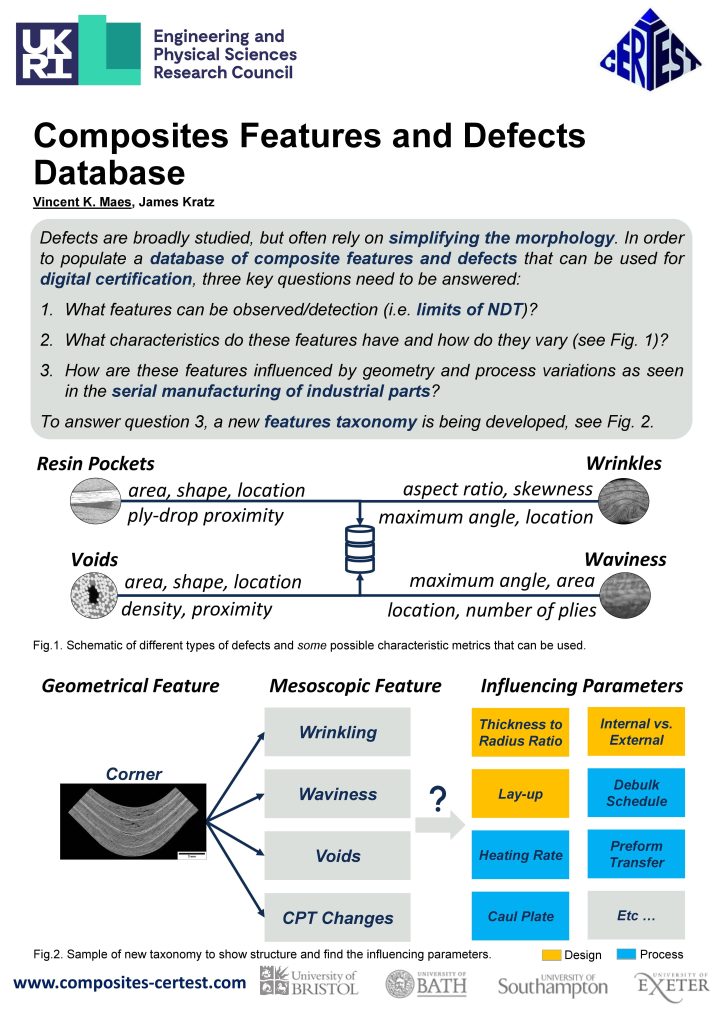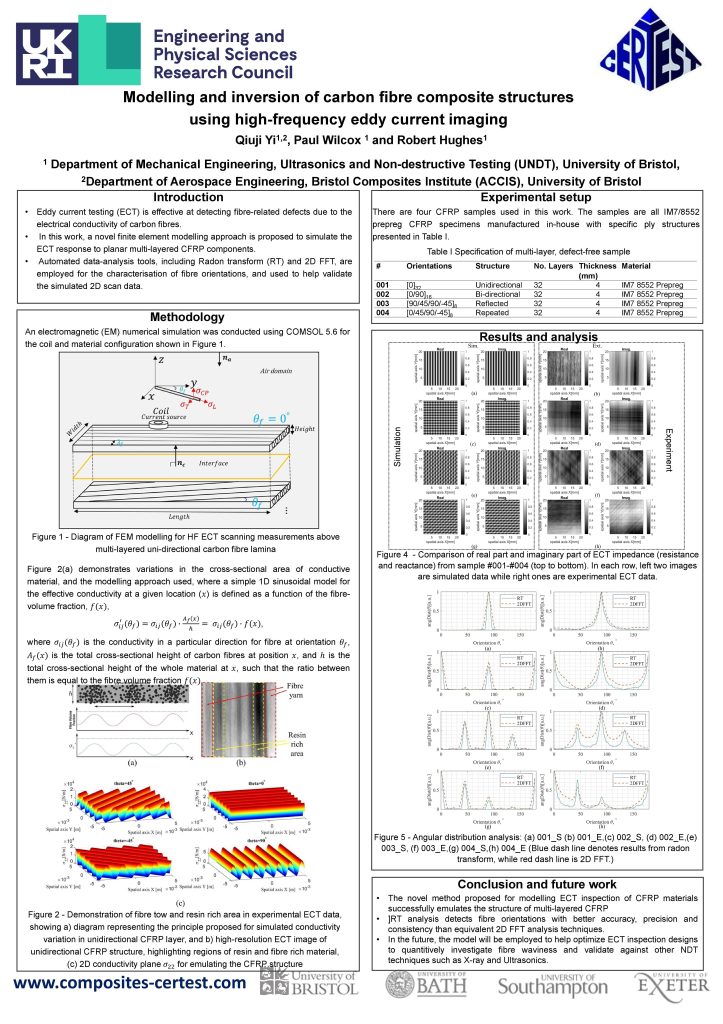
FEATURES AND DAMAGE CHARACTERISATION
The vision of CerTest is realised through four flexible and highly interlinked and interdependent Research Challenges (RC1‐RC4), utilising a multiscale approach drawing on the expertise highlighted by the Themes (T1‐T3).


Fig. 1 Interconnection of Research Challenges (RCs) and Themes (Ts) leading to impact.
This research challenge focuses on NDE tools required for design and manufacturing-process using the integrated high-fidelity testing and multi-scale statistical modelling strategy that the CerTest Project will develop and validate, and which ultimately aims at near-virtual testing, validation and certification.
These tools will also underpin a clear methodology for determining the internal architecture as it changes and develops through the series of processes in the manufacture chain, tracking feature‐development at all stages from incoming reinforcement, its lay‐up on to an arbitrary tool surface, the consolidation and cure of that lay‐up, through to the performance of a cured moulding when subjected to relevant load cases.
RC1 will provide multi‐scale statistical analysis tools for load response and failure mode modelling, and RC4 will provide integration of modelling and experimental data through statistical Design of Experiments (DoE). Both will be exercised via RC2 to deliver more effective non‐destructive evaluation (NDE), along with providing a database of statistical descriptions of features and defects linked to manufacturing. The delivery of RC1, RC3 and RC4 will be informed by the characterization capability and the understanding of the development of features/defects at the mesoscale that will be generated in RC2.

Background and Motivation
It is widely understood that the mechanical response of a composite structure to applied loads depends critically on interactions of the applied stress field with the micro/meso‐structure within the material25. This interaction is complex as the local strain field will depend on the micro/mesostructured as well as on the applied external loads. Furthermore, decisions made during the design process, especially during the conversion of the design intent to a set of manufacturing instructions via process design and development, will have a controlling influence on the development of undesirable features during cure within that micro/meso‐structure. Such features divide into three categories: (i) those reflecting design intent, e.g. ply drops or steered tow paths in AFP, (ii) deviations from design but still allowing performance within tolerance, e.g. minor porosity or spring‐in, and (iii) actual defects that push the performance out of tolerance, such as delaminations, fibre misalignment and wrinkling.
Whilst the chain of understanding laid out is founded on a large number of academic studies and is in essence uncontentious, there are currently no credible knowledge bases of features and defects and the associated NDE tools and frameworks to make use of that chain of understanding in design, product and process development and certification to ensure product reliability at minimum time and cost. This Research Challenge will focus on developing tools to support the delivery of that knowledge base and on providing these tools and knowledge base to the composites community.

RC 2 workstreams:
- Novel NDE tool development.
- Significance of deviation from design.
- Database of statistical parametric distributions of features/defects linked to specific manufacturing processes and procedures.
RC2 Posters
Research Associates
PhD Students

Jiraphant Srisuriyachot
University of Bath

